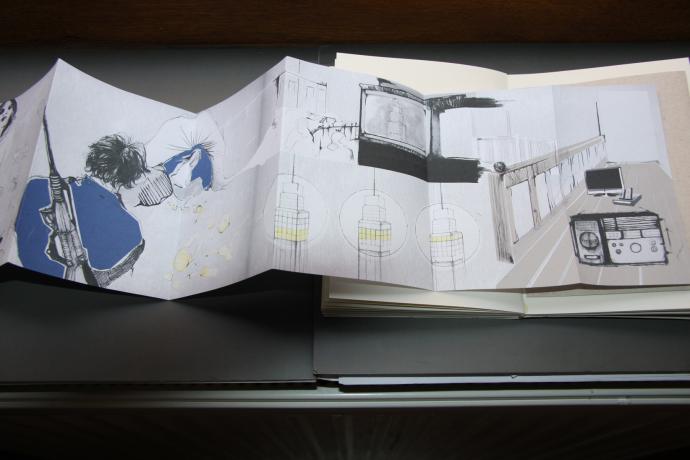from pastelegram.org, June 2011 – April 2014
A conversation with Zeynep Öz
If I could boil down the nature of Zeynep Öz’s practice to a single word, it would be “conversation.” In the four years since we met as first-year graduate students at the Center for Curatorial Studies at Bard College, our discussions have felt like parts of an overarching whole, on topics ranging from the ethics of open-source material to the art market to the blurred boundaries between artist and curator. This discursive ethos equally informs her curatorial work, which includes research-based and text-based projects. It’s fitting that a discussion about Zeynep’s work would take this same exploratory tone. Our conversation about her recent projects, including co-founding the educational initiative SPOT, illuminated some fascinating aspects of the art scene in Istanbul, Turkey, where she is currently based.
Zeynep and I began our conversation in October with a discussion of her recent artist book project Morning Glory, created as part of an exhibition project on translation for the Beirut-based nonprofit 98 Weeks. Started by Marwa and Mirene Arsanios, 98 Weeks has a unique mandate: instead of mounting a series of rotating exhibitions or projects, they work within a given research topic (this time around, artists’ books) for a cycle of nearly two years (ninety-eight weeks, to be exact). For Morning Glory, Zeynep collaborated with Suna Kafadar, whose primary interest lies in translation and literary conventions. Zeynep and Suna created a dream-based narrative inspired by an article written by US-based Ottoman historian Cemal Kafadar about a woman who communicated with a dervish1 through a series of letters based on her dream diaries. As a woman, she was not permitted to communicate with him in direct terms. But as Zeynep explains, “If you read these letters you get the idea that at those times the dreams were really one-and-one with life. It could be said that dreaming had a more significant place in how one perceived and lived life. Actually, the word for dreaming comes from the verb ‘seeing’ in the Ottoman language — they were one and the same.”
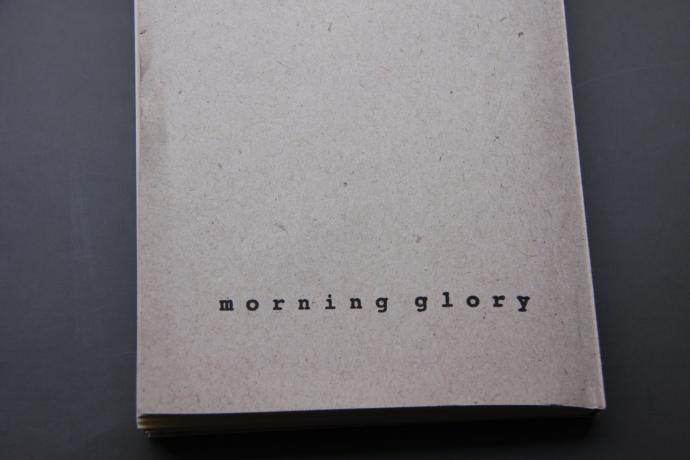
Based around the mythos of this empowering and unusual form of female speech, predating psychoanalytic dream interpretation by centuries, Zeynep and Suna began to record their own dreams. Using interpretations of their dreams found in an existing dream diary, the two concocted the absurdist narrative of Morning Glory. To extend the theme of translation, they enlisted two more female collaborators to illustrate the dreams: Merve Akyel and Simin Yildiz. Working separately in distinct visual styles, each of the female illustrators underscores in playful contemporary visual language how the most internal of thoughts become processed through layers of culturally conditioned meaning.
Over the last few months, however, Zeynep’s focus has shifted to SPOT, an initiative that she co-founded with curator Laura Carderera of Townhouse Gallery in Cairo and Istanbul-based patron Tansa Mermerci Eksioglu. Zeynep describes SPOT as a two-pronged organization. On the one hand, it is an educational organization about contemporary art. On the other hand, SPOT will establish a fund to help support contemporary art production with the money raised from leading seminars on contemporary art. The double meaning of the word “spot,” as both a “spotlight” and a literal spot, or space, mirrors the organization’s approach.
I asked Zeynep why this ambitious organization is necessary now in Istanbul, her home city and current geographical base. “The art market in Istanbul is growing and it’s becoming a more integral part of the city,” she explained. “There’s a lot of attention being paid to Istanbul in the art world, not only in market terms. And within the city, for the first time, people who are not necessarily involved in the arts on a daily basis, who are not arts professionals, are becoming interested in the art world.” SPOT organizes seminars on issues in contemporary art to address a particular niche in Istanbul: would-be participants and collectors entering the growing market.
Returning to Istanbul a few years ago after living in the US for almost a decade, Zeynep realized that there is little information available about contemporary art to those outside its production circuit such as artists, critics and curators with art-school degrees. And more generally, the proliferation of contemporary art is a recent phenomenon in the region. As Zeynep told me, “Istanbul Modern Museum first opened in 2004, and Platform Garanti opened in 2001. Of course there were galleries in the ‘90s and even in the ‘80s, but all of what we could call institutional art centers only opened in the 2000s. So as far as growing up with modern art or going to a museum once in a while, it’s not an ingrained culture.”
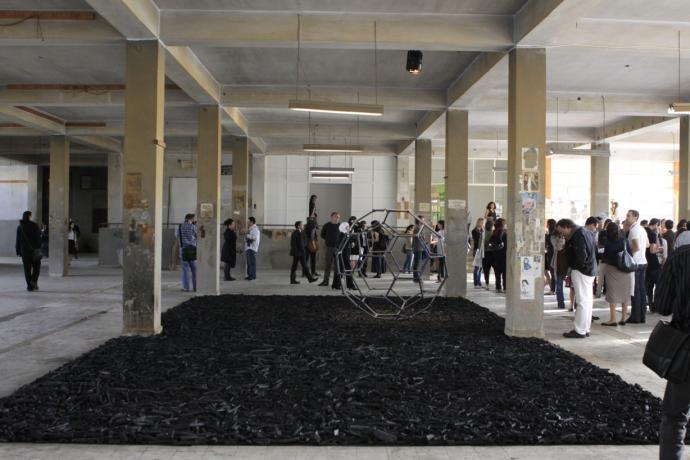
In response to this deficit, SPOT seminars take the form of lectures, studio visits and museum visits, providing a broad overview of the facets of Istanbul’s art production. “It’s not necessarily a pedagogical situation but an introduction to the art ecosystem,” Zeynep explained. Likening SPOT’s seminar structures to the PBS series “Art:21”—notable for its interviews and scenes of artists working in their studios—she added: “The idea is to give an overall view of the process, not just the end result or looking back into art history.” During one of our conversations, she was preparing to take seminar participants on a tour of the Istanbul Biennial: “We specifically asked the director to speak about the institution, the history of it, the fundraising part of it, the selecting of the curator, the selecting of the artists,” she said, “so that the participants get a sort of ‘behind the scenes’ pass, of course, but also an idea of the process of putting together such a biennial.” With such a flexible and locally-grounded approach, seminars take the form of an organic blend of talks with local artists and curators and lectures on the history of contemporary art and its production.
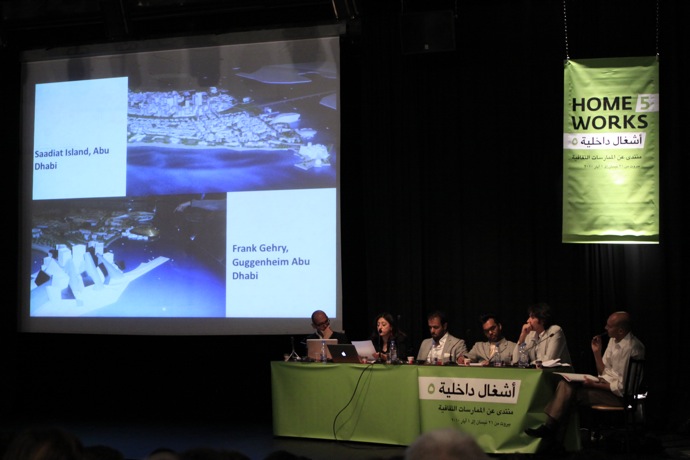
As for the future art production fund, Zeynep stressed that SPOT “wants to be true to the needs of the local community, so we are looking at a lot of different models right now,” such as the Young Arab Theatre Fund, Artangel, Creative Time and the Abraaj Capital Art Prize. Zeynep explained that currently “A lot of the institutions here are funded from private families or private collections.” She added, “When you look from outside it appears like there are a lot of funding opportunities in Istanbul, but actually a lot of them are tied to institutions and institutional exhibitions. If you’re an individual artist looking for funding to produce any kind of piece and your subject is not necessarily in the scope of these exhibitions, you don’t necessarily have somewhere to go to apply for funding. Whereas in places like Beirut or Cairo there are foundations, there are more funds that you can apply to as an individual artist.”
Of course, Zeynep and her two partners have accumulated a depth of knowledge about similar scenes in the area. In addition to Carderera’s professional ties to Cairo, Zeynep familiarized herself deeply with the art scene in Beirut, where she was Assistant Curator of the biennial cultural forum Home Works 5 at Ashkal Alwan2 in 2010. The ten-day cultural forum includes panels, theatre, performances, dance and exhibitions, and distinguished itself as one of the first culturally discursive events of its magnitude in the Middle East. And while Zeynep was working there, Ashkal Alwan was developing the Home Works Academy that opened this year. Zeynep describes it as “the most important art school in the region,” and readily confesses that the school’s focus on research strategies and local engagement has influenced her current work.
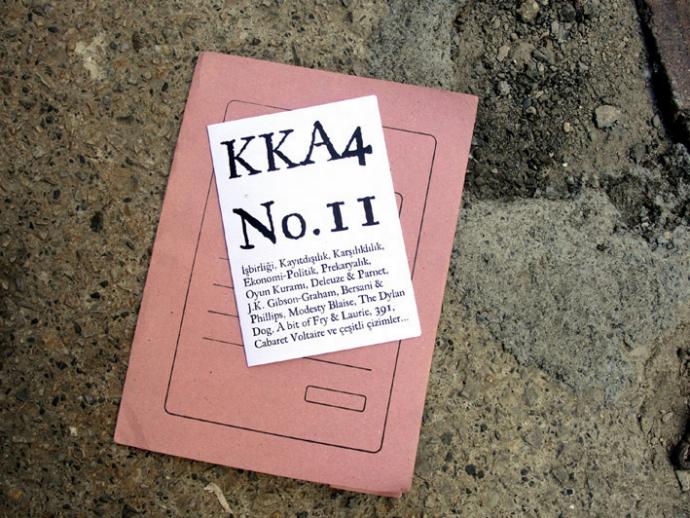
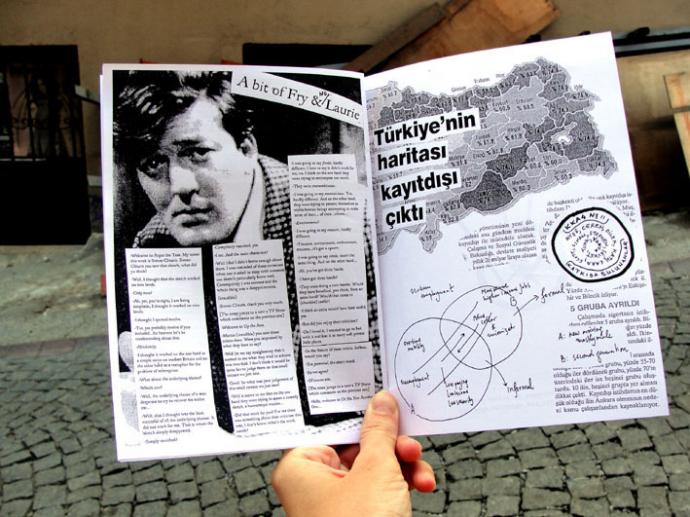
As for Zeynep’s future curatorial endeavors, she’s continuing in the vein of her one-on-one collaboration for Morning Glory with an upcoming book project. This time she will be working with Dilek Winchester, an Istanbul-based artist who initiated and runs a zine called Kayısı Kent A4 (translated as Apricot City A4). Winchester uses the zine as a platform and commissions an individual artist’s work for each issue. Past issues have included Mexican artist Jorge Méndez Blake’s musings on popular romance novels and Ceren Özselcuk and Yahya Madra’s parody of collaborative writing. Winchester distributes her low-cost Xeroxed zine from a roadside cart (illegal but ignored). I remarked to Zeynep that Winchester’s artistic practice holds remarkable resemblance to her own—with the focus on a local audience, a more democratic access, the potential for ‘viral’ spread and a one-to-one working method. After pausing, she agreed. “I see a parallel between our considerations about how a certain work is produced, presented and multiplied.” She added, “The way the zine is presented is very direct. She’s getting the information into the street, but not in the ‘70s type way,” that is, of invading the streets. “You might miss the cart. So the patrons have to make an effort, but ultimately it’s about getting the information out there.”
